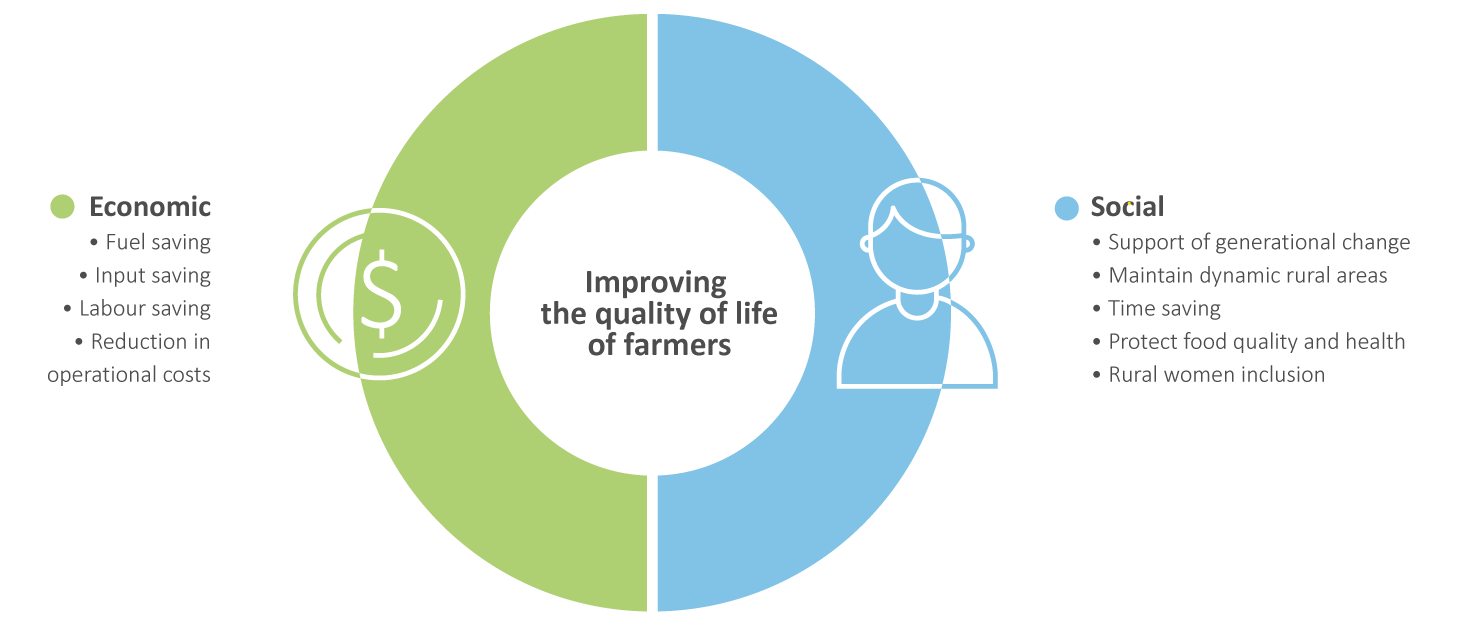
Increase of yields
Crop yields in eroded soils are lower than those in protected soils because erosion reduces soil fertility and water availability. For example, in some locations crop yield on severely eroded soils were 9% to 34% lower than those on slightly eroded soil. Water resources also decrease due to erosion.
Reduction of off-site problems
The use of large amounts of fertilisers, pesticides and irrigation help to offset the deleterious effects of erosion but in themselves have the potential to create pollution and health problems, destroy natural habitats, and contribute to high energy consumption and unsustainable agricultural systems. In fact, the effect of erosion is to increase agricultural production costs by about 25% each year. Important off-site problems are caused by soil sediments transported in the surface water from eroded agricultural land. These include damage to roadways and sewers, basement siltation, drainage disruption, undermining of foundations and pavements, gullying of roads, earth dam failures, siltation of harbours and channels, loss of reservoir storage, disruption of stream ecology and damage to public health, plus increased water treatment costs. In addition, by raising stream beds and burying streamside wetlands, sediment can increase the probability and severity of floods. Indeed, off-site soil erosion economic damage is nearly 40% of the total cost of the erosion. Thus, by implementing Conservation Agriculture the rest of society would also benefit when the off-site effects of erosion are avoided, up to an estimate of 32 €/ha of agricultural land. If off-site and on-site erosion costs are combined, the total cost of erosion from agriculture in USA were estimated at about 85.5 €/ha per hectare of crop land annually.
Labour and fuel savings in perennial crops
In conventional agriculture, tillage operations require considerably higher inputs in machinery investment and maintenance, fossil combustibles and labour inputs as compared to Conservation Agriculture, especially direct sowing/ no-tillage. For example, in no-till olive crops a saving of about 60 to 80 litres of fuel and 3 to 5 hours of labour per hectare annually is estimated as compared to conventional tillage. Generally, Conservation Agriculture reduce the energy consumption of farming operations and increases energy productivity -this is the yield output per energy input- in the range of 15%-50% and 25%-100%, respectively.
Cost-savings in annual crops
Direct drilling/ no-tillage requires as little as one pass for planting compared to two or more tillage operations plus planting for conventional tillage. Fewer passes save an estimated 97 €/ha on machinery depreciation and maintenance costs. That is, about 1950 € savings on a 200 hectares farm. Direct sowing/ no-tillage also permits a fuel saving of an average of 31.5 litres per hectare annually compared to conventional tillage systems. These savings normally compensate for or exceed the extra costs of conservation tillage (application of herbicides and direct sowing machinery). The annual cost reduction in direct sowing of annual crops compared to conventional tillage ranges between 40 and 60 € per hectare in Southern Europe conditions. Therefore, in some areas farmers who adopt conservation techniques are strongly motivated by cost-savings. This is clearly the case of geographical regions where crop land is not highly erodible and/ or of countries where agriculture is not subsidised by the government, such as Argentina and Brazil. In other situations, the direct benefit from the adoption of conservation techniques in the form of machinery, fuel and labour costs are intertwined with the conservation ethic and the concept of land stewardship.
